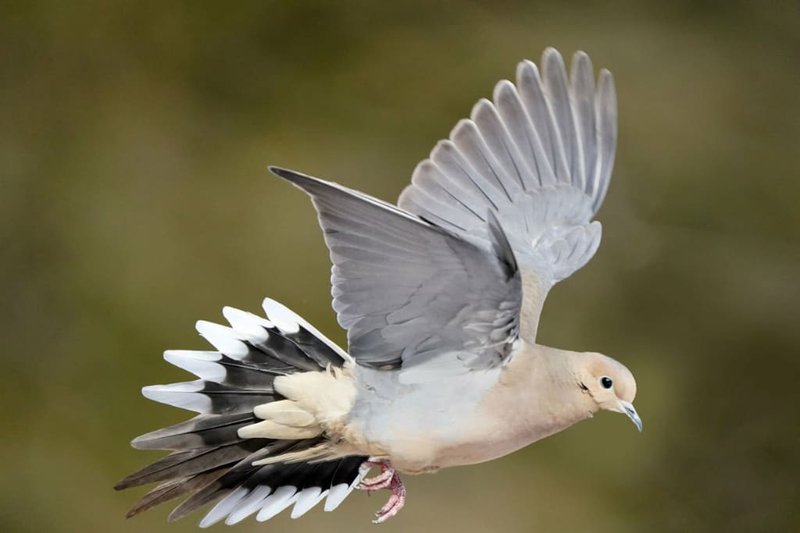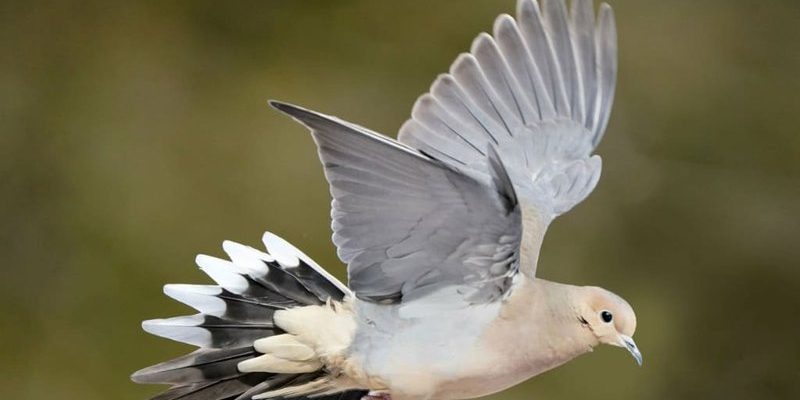
Now, let’s break down how these lovely creatures navigate their world. It’s all about their unique flying style and hunting techniques that not only help them find food but also keep them safe from danger. In the following sections, we’ll dive deeper into their flight patterns, hunting methods, and what makes them such skilled foragers. So grab your favorite drink, sit back, and let’s explore the remarkable life of the mourning dove.
Understanding Mourning Dove Flight Patterns
To appreciate the sheer beauty of mourning doves, we first need to understand how they fly. Unlike many birds that soar high and far, mourning doves are known for their rapid takeoff and quick maneuvers. Picture a dancer, now imagine that dancer taking off at a moment’s notice. That’s how these birds operate.
Their flight consists of a series of flaps and glides. They’ll flap their wings vigorously to gain speed and then stretch out their wings to glide. This method helps them conserve energy, especially when they need to cover longer distances in search of food. You might notice that their flight path is often erratic; they make sharp turns and dive down suddenly, which is all part of their escape strategy from predators.
Additionally, mourning doves have an incredible sense of direction. They can navigate through dense vegetation and avoid obstacles with impressive accuracy. This skill comes in handy, especially when they’re startled. If you’ve ever seen one take off, you know it’s like a flash—a quick burst of movement that leaves you in awe.
Hunting Techniques of Mourning Doves
Now that we’ve set the stage with their flight, let’s talk about how mourning doves hunt. These birds are primarily seed-eaters, which means they rely on a diet rich in grains and seeds. But how do they find their food? Here’s where their keen observation comes into play.
Mourning doves often feed on the ground, pecking at seeds and grains with precision. They have excellent eyesight, allowing them to spot tiny seeds from a distance. Once they spot a potential meal, they’ll swoop down gracefully, using their agile flight to land softly. This stealthy approach helps them avoid drawing attention from predators lurking nearby.
In addition to their keen vision, mourning doves also employ a technique called “flushing.” When they feel threatened, they may suddenly take off into the air, only to circle back to the same spot after the danger has passed. This tactic is effective; it confuses predators, allowing the doves to quickly resume their feeding habits.
The Role of Social Behavior in Hunting
Mourning doves are social creatures, often seen in pairs or small groups. Their social structure plays a role in their hunting success. When they forage together, they can cover more ground and spot potential food sources more quickly. You could think of it as a team effort, where having a few friends around makes finding dinner a bit easier.
Additionally, being in a group offers safety in numbers. If one dove spots a predator, like a hawk overhead, it can emit a warning call, alerting the others to take cover. This communal hunting behavior increases their chances of finding food while minimizing the risk of becoming a meal themselves.
You might wonder how these doves balance socializing and hunting. Well, they’re quite adept at multitasking! While foraging, they can simultaneously keep an eye on their surroundings, making sure they’re aware of potential dangers.
Adapting to Environmental Changes
Mourning doves are masters of adaptation. They can thrive in a variety of environments, from urban areas to rural farmlands. This flexibility plays a significant role in their hunting and feeding habits. For example, in urban settings, they’ve learned to forage near bird feeders or scraps left behind by people.
You might see them in parks, hopping around playgrounds, or perched on fences. Their ability to adapt to human environments means they have access to a more diverse food supply, which is crucial for their survival. It’s a testament to their resilience and ability to find food in unexpected places.
Moreover, mourning doves are also sensitive to seasonal changes. During fall and winter, they might migrate to warmer areas where food is more plentiful. This seasonal mobility ensures they’re always in search of the best resources available for their diet.
The Importance of Mourning Doves in Ecosystems
Understanding the hunting techniques and behaviors of mourning doves also highlights their essential role in the ecosystem. As they feed on seeds and grains, they help control vegetation growth. By consuming different types of seeds, they contribute to plant diversity, which benefits the habitat overall.
Additionally, mourning doves are prey for various predators, including hawks and owls. This predator-prey relationship is crucial for maintaining a balanced ecosystem. Each species plays its part, and mourning doves are like the link that keeps it all connected.
Their presence is also a sign of a healthy environment. When you see mourning doves thriving in an area, it indicates that the ecosystem can support various wildlife forms, making them an essential species for conservation efforts.
The mourning dove is more than just a pretty bird; it’s a fascinating example of how nature has perfected the art of survival. From their unique flying techniques to their hunting methods, these doves showcase a blend of beauty and skill. Watching them in action offers a glimpse into the intricate dance of life happening all around us.
So, the next time you spot a mourning dove in your yard or at a nearby park, take a moment to appreciate all that it represents. Whether gliding gracefully through the air or pecking for seeds on the ground, they remind us of the delicate balance of nature and the simple joys of observing wildlife in our everyday lives.

